Original D&D by Captain Hats
Introduction
Original SA post
All of these modern games being mocked... let's do something old school.
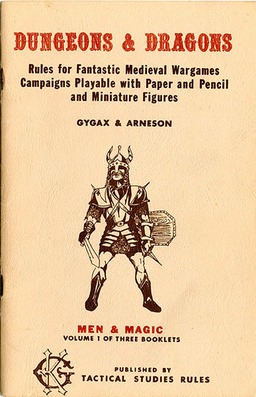
What can I really say about this? This is OD&D, the original RPG. Only it's not called an RPG, it's always referred to as a "Fantastic Medieval Wargame" because roleplaying hadn't been invented yet. There are many things that can be excused from this being the first game of its type published, and the fact that this was put out by a small group working with limited resources and professionalism. I'm going to be pointing them out and laughing at them, but they're forgivable nonetheless.
The game starts out with an introduction by E. Gary Gygax, Tactical Studies Rules Editor. It says how DUNGEONS and DRAGONS (spelled like that in the text) rose up as a derivative of CHAINMAIL, and to have fun, prepare before a game, change things if you don't like them... actually pretty good DM, sorry, Referee advice. It even tells you to pencil notes into the books if you like!
The equipment section tells us we will need in addition to Dungeons and Dragons: Outdoor Survival, Chaimail, some dice, a 3 ring binder for each player, graph paper, sheet protectors, 3 ring lined paper, drafting equipment and coloured pencils, scratch paper and pencils, imagination, 1 patient referee, and players. On the player to referee ratio:
quote:
At least one referee and from four to fifty players can be handled in any single campaign, but the referee to player ratio should be about 1:20 or thereabouts.
It then tells the ref that he should map out his underworld for the players to explore and delve into, and after that character creation. You have three class options: Fighting-Man, Magic-User, and Cleric, and you can be a Human, Dwarf, Elf or Hobbit.
Fighting-Men can use all magical weaponry and armour, and get bigger hit dice, but can't use many other magical objects or cast spells. They can also gain income from their holdings at higher levels.
Magic-Users start out weak, but "Top-level magic users are perhaps the most powerful characters in the game". They can use almost any magic item apart from armour and weapons, and they can make magic items given sufficient time and money.
Clerics can use magic armour and blunt magic weapons, and can cast cleric spells and use more magic items than the fighting-man. When they get to building a castle level, everything they build is half cost, they get a free army of fanatics, and more in tithes than the fighter does in taxes. And they claim Cleric supremacy started with 3.0.
Humans can pick any class and advance to any level with them. That's their advantage, and it's actually a pretty big one.
Dwarves can advance to being 6th level fighters, but get +4 to their effective level on all saving throws, the +3 magic warhammer works fully only for them, stonecunning (not called as such, but it does the same thing) and they can speak goblin, kobold and gnome.
Elves start out as fighting-men or magic-users and can swap what they level up as between adventures. They can advance to 4th level fighter and 8th level magic user, and gain all the benefits of each. So they can use magic weapons and armour while still casting spells at full capacity. They can see secret doors, and "also gain the advantages noted in the CHAINMAIL rules when fighting certain other fantastic creatures". They can also speak Orc, Hobgoblin and Gnoll.
Finally, Hobbits. They can advance to be 4th level fighters, but get dwarven resistance and deadly accuracy with missiles (as detailed in chainmail).
I don't have chainmail, so I can't say exactly what the benefits you get are (Hobbits still look like they really suck though, and to be honest Dwarves seem kind of crappy as well. Elves are kind of cool though I guess, with the whole dual classing thing.)
There's also a note at the end
quote:
Other Character Types: There is no reason that players cannot be allowed to play as virtually anything, provided they begin relatively weak and work up to the top, i.e. a player wishing to be a Balrog would have to begin as let us say, a "young" one and progress upwards in the usual manner, steps being predetermined by the campaign referee.
Isn't one of the complaints that comes up a lot in grognards.txt that dragonborn and tieflings being core detracts from the feel of the game? When back in 1973 they were saying that players should feel free to make up their own rules for playing as Balrogs? Huh.
Next time: 3d6 down the line, bitch!
Men & Magic
Original SA post Men and magic part the secondSo, we know what we can potentially play, let's figure out what we can actually play. Before the stats section is a page on aligment, which is literally a big table of law, neutrality and chaos, with monsters and races sorted into different columns. That's it. The paladins falling, what alignment is batman, I want to be chaotic neutral alignment system that has caused so much woe and gnashing of teeth over the years, started out as three fucking columns that let you tell who the bad guys are. It's great looking back at this, it's actually kind of exciting to read how everything was back then. Also, tomorrow I will endeavor to fire up my scanner, the art in these books is simply golden.
Anyway, determination of abilities. The abilities in order are, Strength, Intelligence, Wisdom, Constitution, Dexterity and Charisma. We roll 3d6 for each of these, and 3d6x10 for starting gold. Strength is Prime Requisite for Fighters, Intelligence for Magic Users and Wisdom for Clerics. Your Prime Requisite gives you bonus XP if it's high enough. You can also trade in other classes prime requisites to raise your Prime Requisite at certain ratios. Charisma has a section on how it increases your loyalty base, which I guess is something in chainmail, as well as the max number of hirelings you can have.
quote:
In addition the charisma score is usable to decide such things as whether or not a witch capturing a player will turn him into a swine or keep him enchanted as a lover
There's then a brief section on languages (Everyone can speak common and their alignment language, and one extra one for each int point above 10), and a large section on hiring NPCs... most of which is utterly meaningless to me as it heavily references morale dice and a loyalty score, which I assume must be mechanics from chainmail as they aren't explained in the rules anywhere. It also says that if your character dies, you can designate a relative (with Referee permission) who takes up your equipment and estate (paying %10 tax on everything) and carries on adventuring in your place. If the original character later comes back, they can get everything back from the relative by paying an additional %10 tax. It notes that this relative may intrigue to regain control. If you don't designate a relative, there is no way to regain control of your estate and holdings after a month of "death".
After that comes the equipment and encumbrance rules, followed by XP tables (yes, separate ones for every class) and advancement tables detailing titles for each level, hit dice, fighting ability using chainmail rules, and spells gained for magic users and clerics. Experience is awarded for defeating monsters and finding money, with a note that if you're fighting a monster of a lower level than you, experience is divided accordingly (So if you're a 9th level character fighting an 8th level monster, you get 8/9ths experience for everything in that encounter). After that, guidelines for advancing beyond listed level (10 for fighters and clerics, 16 for magic users).
Now comes a big moment. Once we're done with experience is the alternative combat system, using matrix of decreasing armour class verses a number required on a dice to hit by level, with a separate table for monsters attacking targets. That's right, THAC0 was originally a hack designed for people who didn't have chainmail. Also the saving throw matrix, with categories of "Death ray or poison", "All wands- including Polymorph or Paralization", "Stone", "Dragon breath" and "Spells and staves", with notes that failing to make the save results in full effect, while passing the save gives half or full effect or half, based on the effect. Amazing how little some things have changed until fourth edition. After that comes spells... and that's going to need its own update. See you then!
Artwork
Original SA post OD+D Art Special!I said I'd do it, so I have. Her is all the artwork in OD+D to date, and I find every piece of it hilarious in some way or another.
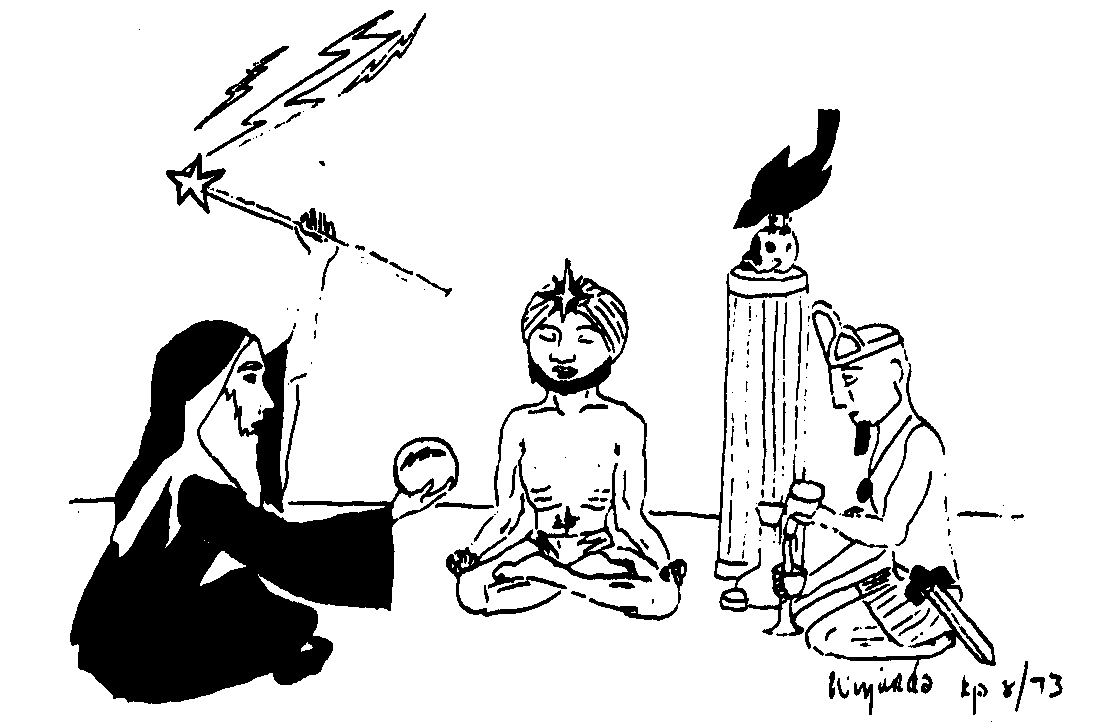
This is the first actual drawing in the book. I guess it's meant to be a bunch of wizards having a chin-wag or something? You've got your hooded beardy western caster, a yogi looking sort of fellow and... Incan priest? Egyptian sorcerer? Seriously, what is baldy there meant to be? And why does his sword have no handle?
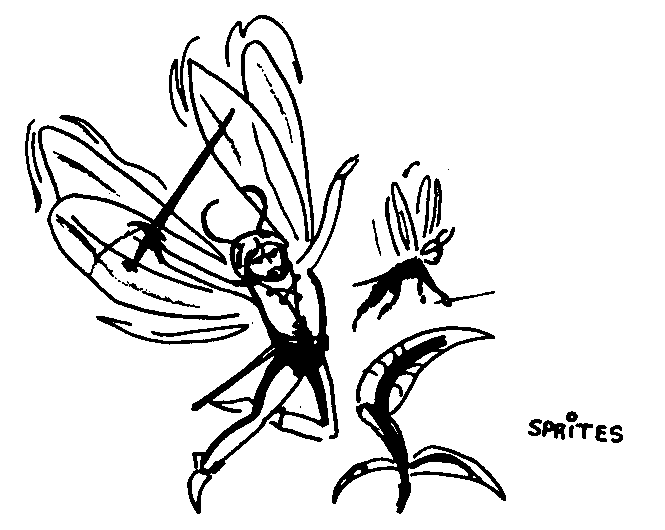
Sprites! They fly around with little swords and have tiny antennae! I apologize in advance for the crummy quality of some of these, but the original pictures were tiny and I'm not a professional scanner.
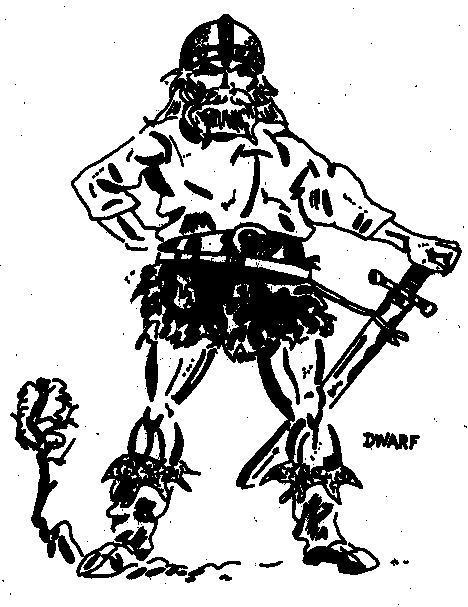
That is one dwarfish dwarf. He's got his beard, helmet, sword, and belt. It's amazing how little some things have changed down the years when it comes to fantasy art.
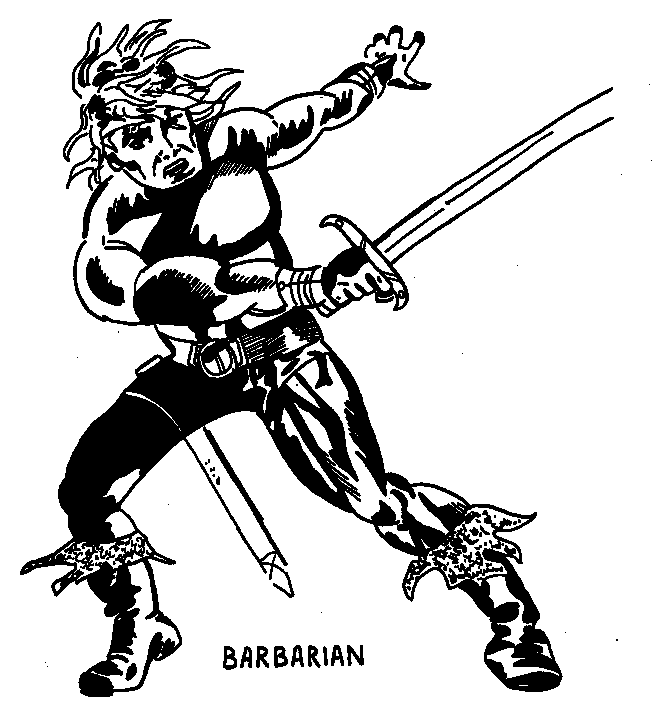
Like this fellow here! Little leather pants, no shirt, one handed sword, square jaw, long unkempt hair. Totally a barbarian. Well, I guess his hair might be unkempt, it looks more like it's on fire.
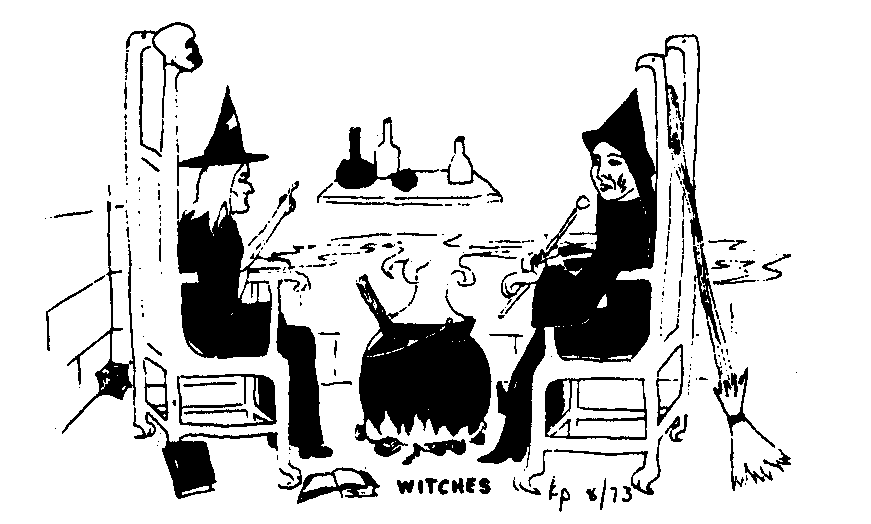
Hey, those evil witches that were going to enslave you/turn you into a swine. Pointy hats and a cauldron and everything. That's a point, not enough wizards or witches these days wear pointy hats, this needs to be fixed.
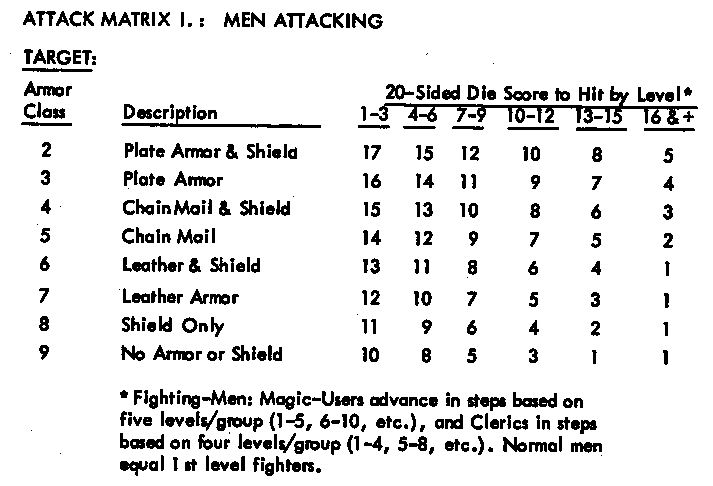
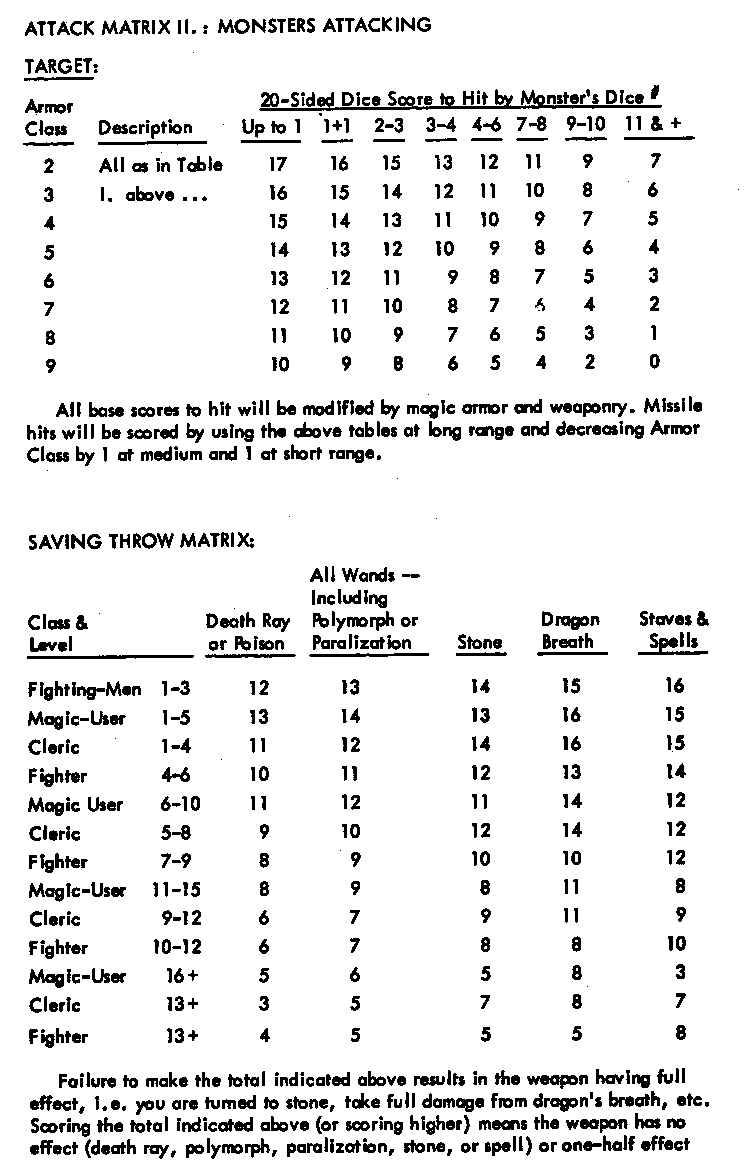
And because you asked for it, the attack and saving throw matrices. If you think this is unwieldy now, wait until we get to the optional different weapons bonus vs armour class rules! I had to have all of this shit written out when I ran the game.
Next time, spells with more art, including the first recorded instance of titties in a fantasy RPG . Stay tuned!
Magic-User Spells
Original SA post OD+D: Magic-User SpellsYou know how fourth edition spells work and are laid out?
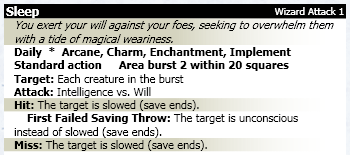
Look at that. Standardized layout, everything is clear, keywords so you know how it interacts with everything else, colour coded to let you know if its a daily, encounter or at will... marvelous! Compare this to 0th edition sleep:
quote:
Sleep: A Sleep spell effects from 2-16 1st level types (hit dice of up to 1+1), from 2-12 2nd level types (hit dice of up to 2+1), and from 1-6 3rd or 4th level types (up to 4+1 hit dice). The spell always affects the number of creatures determined by the dice. If more than the number rolled could be effected determine which "sleep" by random selection. Range 24".
How times have changed. Let's go through the spells in order, shall we?
1st level
Detect Magic: Lets you know if something is magical. That's really all there is to it.
Hold Portal: Holds a door shut for two dice in turns. Exactly what kind of dice are not specified, and it says that "A strong anti-magical creature may shatter it (the Balrog in the "Ring Trilogy")"
Read Magic: Lets you read what's on a scroll or magic item
Read Languages: Allows you to read other languages. What do you want?
Protection from Evil: You know what, I'm just going to go ahead and quote this:
Protection from Evil posted:
This spell hedges the conjurer round with a magic circle to keep out attacks from enchanted monsters. It also serves as "armor" from various evil attacks, adding a +1 to all saving throws and taking a -1 from hit dice of evil opponents.
Light: Makes light for 6 + your level turns in a 3" sphere (all measurements are in inches for miniatures combat).
Charm Person: Oh boy... Ok, think of any man shaped creature, of roughly man size or smaller that isn't undead. Got one in mind? Good. You can cast this spell on that creature, and they will obey your commands until the spell is dispelled . They only get to save once when you cast the spell. One failure and boom, free pixie buddy.
Sleep: See above.
2nd Level
Detect Invisible (Objects): Lets you see invisible objects and creatures.
Levitate: Lifts you up straight, although it does note you can move horizontally by pulling yourself along a wall or ceiling.
Phantasmal Forces: Create an illusion of whatever you want for as long as you concentrate on it. Damage caused by illusions is real if the illusion is believed to be real, but the illusions are destroyed if touched.
Locate Object: Imagine a particular object in some degree of detail (the example they give is a flight of stairs leading up). It tells you the direction of the object from your current location.
Invisibility: Lasts until broken by the user or someone else (And you can't attack while invisible). So charm that warlord then just turn invisible and whisper orders in his ear all day.
Wizard Lock: Like hold portal, only it has no time limit. Magic-Users three levels higher than the caster can bypass it without even using up a spell.
Detect Evil: Detects evil intent in a creature for 2 turns.
ESP: Detect thoughts. Penetrates through 2" of stone but is stopped by lead. Duration: 12 turns.
Continual Light: Light, but bigger and without a time limit.
Knock: Opens doors and chests.
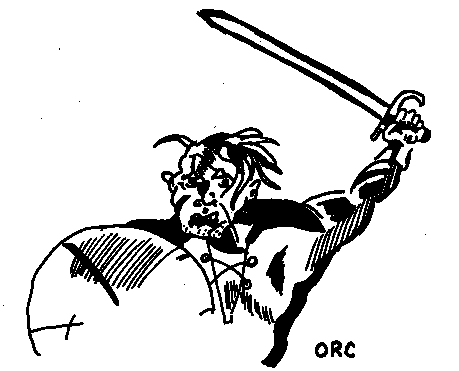
3rd level
Fly: Lets you zip about super fast and flying for a few turns
Hold Person: It's noted as being of greater effect than charm person, presumably because you can hit 4 people with it at once. Has a duration of turns though, so compared to permanent mental domination, it's kind of lackluster.
Dispell(sic) Magic: Gets rid of enchantments except for the ones on permanent items. The chance of dispelling a spell laid down by a higher level caster is equal to your level divided by their level.
Clairvoyance: "Same as ESP except the user can visualize rather than merely pick-up thoughts"
Clairaudinence: Same as Clairvoyance but you can hear.
Fire Ball: Creates a 2" sphere that conforms to the shape of whatever space it's cast in. Deals 1 dice of damage per level (again, dice type isn't specified).
Lightening Bolt: Like fireball, but a line. Oddly, you can have the start of the bolt originate from any point within 24" rather than just shooting it from a fingertip.
Protection from Evil, 10' Radius: I assume it means 10" radius.
Invisibility, 10" Radius: Invisibility sphere. Kind of boring.
Infravision: Lets you see IR light for a day. Earlier editions had this in place of darkvision on elves and dwarves, leading to the old joke of hiding from them by setting everything on fire.
Slow Spell: It affects up to 24 creatures in a 6 x 12 area. Exactly what it does to them is never stated.
Haste Spell: The opposite of a Slow Spell. Again, no clues as to what it does.
Protection from Normal Missiles: You become immune to missiles fired by normal men and weapons. Men and weapons who are above normal don't get hindered by this.
Water Breathing: Pretty much everything is in the name.
4th Level
Polymorph Self: Turns you into whatever you want, but you gain no combat abilities of the new form.
Polymorph Others: Turns other things into other shapes. It's contradictory and confusing on what does and doesn't change, noting that a creature turned into a dragon has all of the dragons ability, while a troll turned into a snail has innate resistance to being stepped on by a normal man.
Remove Curse: Removes curses. It's amazing how complicated some of these spells became in later incarnations.
Wall of Fire: Creates a wall of fire for as long as you concentrate. Creatures of 4HD or less can't get through, those of higher level take some d6 damage, 2d6 if they're undead.
Wall of Ice: Just as above, only it does bonus damage to fire-employing creatures.
Confusion: A paragraph of poorly written and confusing text basically boils down to creatures attack at random or stand around stupefied, determined by a dice roll each turn.
Charm Monster: Like charm person, only it works on anything and things with 3 or fewer hit dice can be charmed in batches.
Growth of Plants: Turns regular woods or brush into impassible terrain.
Dimension Door: Teleport something up to 36" in any direction without failure.
Wizard Eye: Send out an invisible eye to fly around and scout out areas.
Massmorph: Conceal 100 troops as woods or an orchard.
Hallucinatory Terrain: Make a feature invisible, or make a fake one appear. These last few really show how much this was influenced by wargames.
 Holy crap some titties!
Holy crap some titties!
 It's good to see that some things never change with fantasy gaming at least. Topless amazons are a staple of the genre.
It's good to see that some things never change with fantasy gaming at least. Topless amazons are a staple of the genre.
5th level
Teleport: Teleports you anywhere regardless of distance. Usual chances for random death based on how well you know the location.
Hold Monster: As hold person, but it works on monsters.
Conjure Elemental: Summons an elemental to fight for you, concentration must be maintained or it attacks you.
Telekinesis: Lets you move objects, maximum weight scales with level.
Transmute Rock to Mud: Creates a big old pool of mud in the ground that slows movement.
Wall of Stone: Makes a stone wall appear permanently.
Wall of Iron: Like wall of stone, but tougher and of limited duration.
Animate Dead: Creates some animated dead to do your bidding. Lasts until dispelled or the undead are destroyed.
Magic Jar: Put your life in a thing, then anyone who gets near it can be possessed by you.
Contact Higher Plane: Dial up one of the planes, from the 3rd to the 12th and get some yes/no questions answered. Higher planes are more likely to know, but they're also more likely to send you insane for a few months.
Pass-Wall: Opens up a hole in a wall for people to walk through.
Cloudkill: Poisonous cloud that instantly kills everything with 5 HD or less, doesn't affect anything higher than that.
Feeblemind: Causes the target to become feeble minded. What does that mean? It doesn't say!
Growth of Animals: DIY Dire Bears.
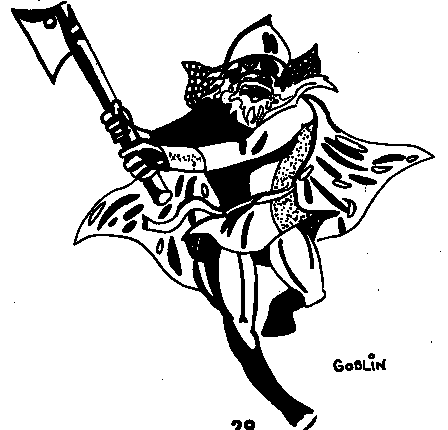
6th Level
Stone to Flesh: Turns things into statues. Can be reversed to cure petrification.
Reincarnation: Brings someone back as a random thing from their alignment on the alignment table. If you come back as Human, Elf, or Dwarf, you get new stats, a new class and 1d6 for your level.
Invisible Stalker: Summons an Invisible Stalker to obey your commands.
Lower Water: Make a body of water half as high for ten turns.
Part Water: Go all Moses on some punk ass lake, it won't know what hit it.
Projected Image: Creates a body double that spells originate from.
Anti-Magic Shell: Makes the caster impervious to spells going in, and also they can't send any spells out.
Death Spell: Kills creatures of 7HD or fewer in a 6 x 6 box.
Geas: Puts someone under a Geas. If they deviate, they grow weak, and if they ignore it they die. No rules for weakness are given.
Disintegrate: Destroys anything non-magical. Tree, Dragon, section of wall, whatever.
Move Earth: Allows you to move an unspecified amount of terrain about the map.
Control Weather: Cause anything from a tornado to a heatwave.
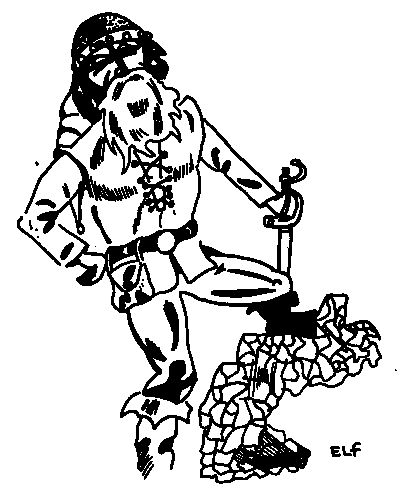
This image will never not be funny to me. Next time I play an elf, this is what I'm bringing along as my character portrait.
So that was the magic user. Lots of potent abilities and several D+D staples are already in place at this early stage, along with some holdovers from the old wargaming rules and playstyle. The spells are vaguely defined in a lot of areas and poorly formatted with no standard layout, and some of them don't even list what they actually do. I know the "Rule for everything ever" crowd gets a lot of flack here, but some of these abilities I have no idea what they should do in terms of scale or scope, even vaguely. And Magic-Users manage to still have spells that can utterly break encounters.
Next time, Cleric spells!
Clerical Spells
Original SA post OD+D, Men and Magic part the last: Clerical spellsThis is a much shorter section than the last. Clerics don't cast as well as magic users, in fact they start out incapable of any spells at all, and once they start getting them at second level, they can prepare less than the magic-user. What they lack in raw oomph they make up for in utility, as we shall see.
Level 1
Cure Light Wounds: Heals 1d6+1 hit points. When everyone is operating on 1d6 hit dice rolled every time they gain one, this can be a pretty considerable chunk of healing.
Purify food and water: Unspoils enough food for a dozen people.
Detect Magic: Already covered under magic users.
Detect Evil: Just like the magic user spell, only it lasts longer and has greater range.
Light: Just like the magic user spell, only it lasts longer
Level 2
Find Traps: Finds traps within 3".
Hold Person: As the magic user spell, but with a longer range.
Bless: +1 to morale and +1 to hit, can only be cast when not actively fighting. I think it's meant to represent an anointing or something similar.
Speak with animals: Pretty much exactly what it says.
Level 3
Remove Curse: Again, same as for magic users.
Cure Disease: Cures any form of disease, no questions asked. This is the only way to get rid of magical illnesses.
Locate Object: Same as for magic users once again.
Continual Light: Same as for magic users with the caveat that the cleric version is equal to full daylight, so I guess it messes up vampires.
Level 4
Neutralize Poison: Gets rid of poison, with a note that it will not aid a character killed by poison. It also has a duration of 1 turn, which I guess means that it doesn't make you immune to poison forever.
Cure serious wounds: Cures 2d6+2 points of damage. I'm really underwhelmed by this at level 4.
Protection from Evil, 10' radius: Again, cribbing from magic users. You can really tell that the cleric was added on after the knights and wizards dynamic was established.
Turn Sticks to Snakes: Biblical power harnessed for the good of all mankind by creating 2d8 snakes (%50 chance to be poisonous) that will do whatever you want them to do, until they revert back to sticks. This is one spell I'm kind of sad got lost down the editions, it's nifty.
Speak with Plants: You can speak to plant life and command it to do stuff. The example given is parting to let you through, which I guess is handy for bramble infested forests and so forth.
Create water: Create enough water to hydrate a dozen men and horses for a day, doubling the amount every level beyond 8th. From my rough calculations and five minutes on yahoo answers, this works out as about 156 gallons, doubling each time.
5th level
Dispell Evil: Like dispell magic, but it only works on evil things.
Raise Dead: Brings someone back to life. No 5000 GP diamond required, you just get a body that's been dead an appropriate amount of time (within 4 days, plus another 4 for every level above 8th), make the sign and bang, they come back. They need 2 weeks R+R afterward what with the whole being dead thing, but I think it's a fair tradeoff.
Commune: Ask 3 questions, they get answered truthfully and with total knowledge. Once per year you can do a special one that gets you double the amount of questions, and you can do it a maximum of once per week.
Quest: Like geas, only instead of death the quest-breaker gets slapped with a curse of the clerics choosing.
Insect Plague: Summons a swarm of locusts that fly about, obscuring vision and making weaker creatures flee. Lasts 1 day.
Create Food: Feeds the same amount of things as the create water spell waters.
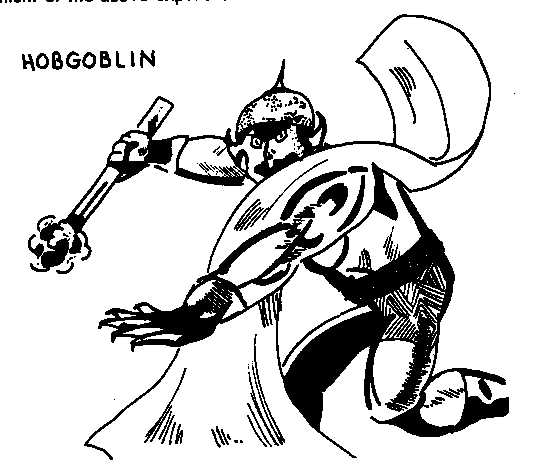
Anti-Clerics get finger of death instead of raise dead, with a note that Clerics can use the spell, but if they abuse it they instantly become an Anti-Cleric. Oh yes, remember how in earlier editions each level of a class had a title associated with it?
Well, Cleric goes Acolyte, Adept, Village Priest, Vicar, Curate, Bishop, Lama, High Priest.
The Anti-Cleric one goes... Evil Acolyte, Evil Adept, Shaman, Evil Priest, Evil Curate, Evil Bishop, Evil Lama, Evil High Priest.
Fighters take the route of Veteran, Warrior, Swordsman, Hero, Swashbuckler, Myrmidon, Champion, Super Hero, Lord.
Lastly, Magic-Users are Medium, Seer, Conjurer, Theurgist, Thaumaturgist, Magician, Enchanter, Warlock, Sorcerer, Necromancer, Wizard.
The final bit of rules details magical research, saying that clerics and magic users may attempt to research new spells by spending cash, with a percentile chance of success based on how much is invested and the level of the spell.
In the back are adverts for other TSR wargaming systems, dice sets, and sets of prints of the art in the core rules booklets.
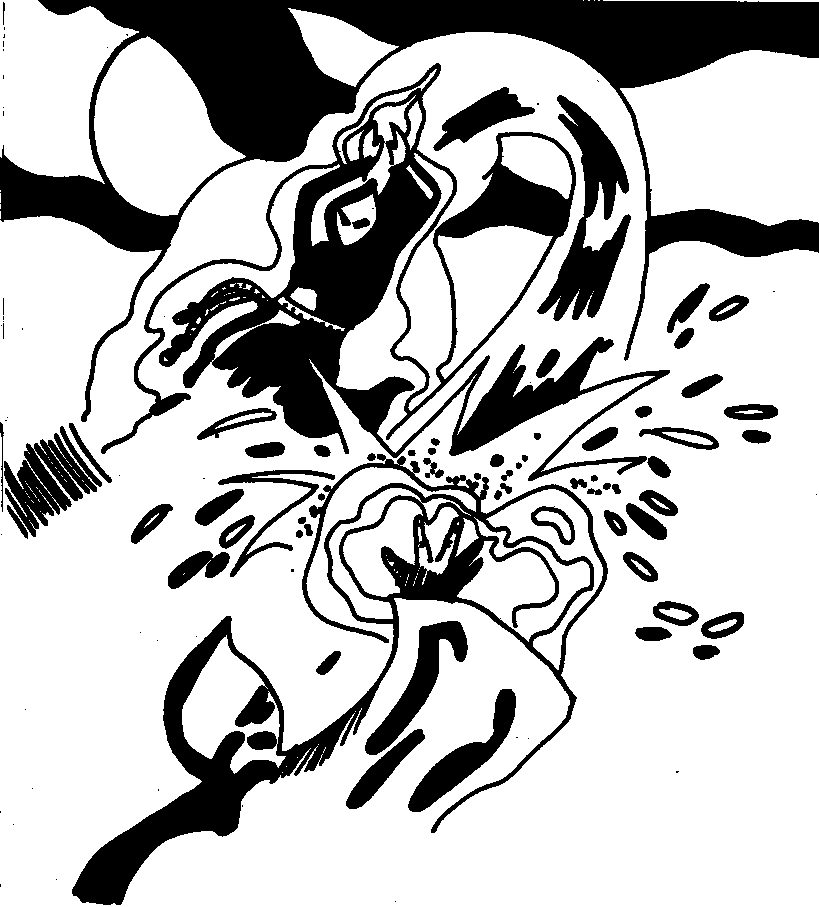
Yeah, I'm certain those were just flying off the shelves. Next time, Monsters and Treasure .
Monsters & Treasure
Original SA post Dungeons and Dragons: Monsters and Treasure.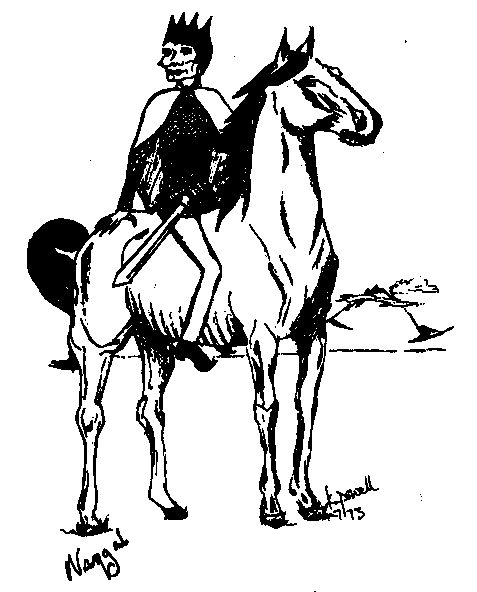
You know, as much as I rag on this game for assorted things, it gets a pass from me on being bad. Partly because it's actually a blast to play. It's rules light, character creation is as easy as can be and the combat flows just like modern D+D. Partly it's because it was blazing trails. D+D was the first RPG to get a general release, so it doesn't have the years and years of development and design that modern games have backing them up. However, it evolved from wargaming and that is very clear in the Monsters section of this book. In the big chart at the front, each monster is given a "Number Appearing" rating. It does note that this at the Referees option, and that the numbers listed should be used for outdoor encounters. How many goblins do you encounter in the outdoors? Between 40 and 400.
The monsters are in no particular order, it seems to be more "Types and allies" rather than alphabetical order. First up is Men, available in several different flavours. Bandits, berserkers, brigands, dervishes, nomads, buccaneers, pirates, cavemen and mermen to be precise. There are some... curious choices regarding these divides
quote:
PIRATES: Pirates are the same as Buccaneers except they are aligned with Chaos.
quote:
BRIGANDS: Same as Bandits except +1 morale and Chaos alignment.
Next up are the standard array of D+D humanoid enemies. Goblins are as they always have been, shit and weak fodder. Kobolds are given their traditional role of the lowest of the low by being goblins, but with D3 hit dice rather than D6. Orcs live in a tribal structure, and the tribes of orcs found when adventuring should be noted, because they do have inter-tribal wars. Orcs live in caves or villages (with palisades, defensive catapults and a central watchtower) and have chances for strong leader types to appear with them. The options are fighting-men, magic-users, Balrogs (I should do an "As in Tolkien" count, they use that phrase constantly), dragons, ogres and trolls. Orcs also have a habit of guarding wagon trains loaded with gold. Hobgoblins are just bigger goblins, Gnolls are a cross between gnomes and trolls that fight as hobgoblins with even more morale. Ogres are big damage dealers, doing D6 + 2 damage per hit. Trolls are ogres with no bonus damage, but with regeneration. Giants do two dice of damage with their weapons, act as mobile light catapults under chainmail rules, and carry money in big shoulder sacks. They're broken up into hill, stone, frost, fire and cloud giants, each of which gets bonuses over the basic hill sort, including Cloud Giants having a "Keen sense of smell".
It's amazing how much the stuff in here resembles what we have today. Trolls regenerate unless burned or acid-ed, giants carry sacks and throw rocks, and just because I got curious, it turns out that as late as 3.5 Cloud Giants still had scent. Another thing that gets me is that they encourage reskinning so readily. What's the goblin king? He fights as a hobgoblin. Hobgoblin king? Fights as an Ogre! Gnoll leader? Fights as a troll! Trolls? Fight as Ogres but without the bonus damage! It's kind of fascinating to see how much it has in common with 4e like that, using reskinning right there in the main rules. There are also some glaring flaws. For instance, what the hell is a kobold? The book doesn't say, simply that they are weaker goblins. Similarly, hobgoblins are just larger goblins, while ogres are "Large and fearsome monsters ranging from 7-10 feet in height." That's all you get on how they look.
Next time is a big old block of undead monsters. Look forward to it!
More Monsters & Treasure
Original SA post Monsters and Treasure Part 2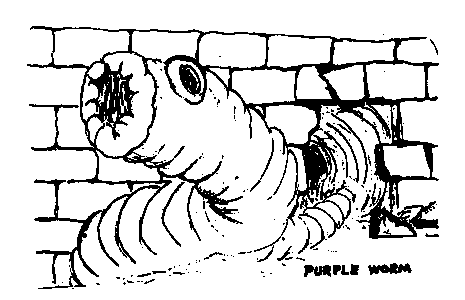
You know, I keep trying to think of funny things to say for this section, but really for the most part I could just give you a list of critters and point you at the 3.5 monster manual, it's amazing how little things changed. Skeletons are boring as shit, ghouls paralyze, mummies rot dudes, wights (per Tolkien!) drain levels, medusae and gorgons turn people to stone. (Incidentally, where did that divide first arise? Because Medusa was a singular Gorgon, and Gorgons were not iron scaled bulls in greek myth I'm fairly certain. Also, why does everyone forget that gorgons (like Medusa) had wings?) So I'm just going to be covering the highlights.
Vampires
These guys are fucking nasty. They regenerate better than trolls, drain two levels per hit they inflict, can summon rats and wolves to fight for them, turn into gas or a giant bat to run away, and if you try and kill one with stabbing, they just turn into the gas anyway. The only way to actually kill one is submerging it in running water, staking through the heart or sunlight, and they are forced to run away from garlic, mirrors and crosses. Oh yeah, no generic holy symbols here, clerics are straight up christian priests with magical powers. Also if you're killed by a vampire you become one under your killers control.
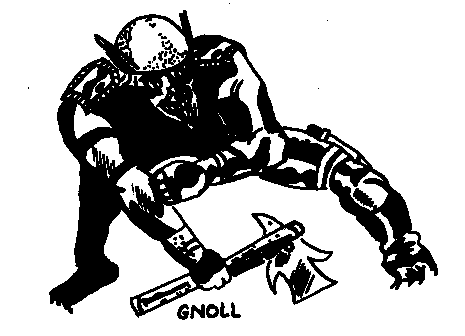
Dragons
Surprise surprise, there are dragons in this game. Six varieties, white, black, green, blue, red and gold, in ascending order of power. They all have their usual breath weapons and areas where they dwell (again, really amazed at how little this stuff has changed) and they have varied spellcasting abilities. From White Dragons who can cast no spells, to Golds who can cast sixth level spells. Also, when fighting a dragon you may attempt to subdue rather than kill it. Every round you fight to subdue, you figure out what percent of the dragons hit points have been lost, then roll a percentile dice. If you score the hit points lost or under, the dragon is subdued and you can then keep it as a servant (it will try to betray you) or sell it for huge amounts of cash (500 to 1000 GP per hit point ). Oh yeah, and in the example of subduing, the entire party is killed in one round by the dragons breath weapon.
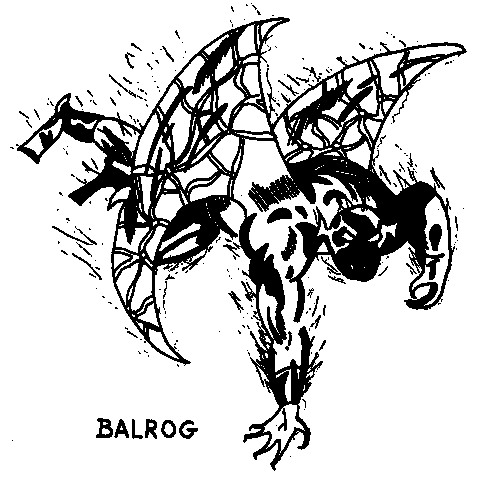
Balrogs
They have spell resistance, calculated by a base of 75% resistance against 11th level casters, then adjusting by 5% up or down for each level you are below or above 11th, respectively. Seems kind of arbitrary, but whatever. They can attack twice a turn with a +1 sword and burning whip that does 2 dice of damage, and are the second highest ranking creature of Chaos (Evil high priests outrank them slightly, apparently. I didn't realize that Chaos had such a rigid hierarchy)
Sea monsters
The rules are basically "Make some shit up, like, a purple worm but bigger, yeah, that'll do the trick."
Minotaur
Not that interesting, but I had to put in this quote
quote:
The Minotaur is classically a bull-headed man (and all of those who have debated rules are well acquainted with such)
Nixies and Dryads
They have charm person abilities that past a certain point cannot be broken, and are described as beautiful. It's also kind of depressing how little certain aspects of gamer culture have changed.
Ochre Jelly and Black Pudding
These are apparently part of the clean-up crew, which is never mentioned again. I guess they're meant to roam around the dungeon dissolving all those unsightly corpses.
Other Monsters
There are suggestions provided for what other monsters you can make up, or modify existing ones to make. Titans are giants with limited magical ability, salamanders are fire elementals in reptilian shape, cyclopses are "super-strength giants with poor depth perception". Gelatinous cubes show up as a suggestion, as do robots golems and androids, which are "Totally subjective as far as characteristics are concerned". Really helpful there.
Next time: Treasure! Oodles and scads and mountains of treasure!
Magic Swords are kind of dicks
Original SA post Monsters and Treasure: Magic Swords are kind of dicks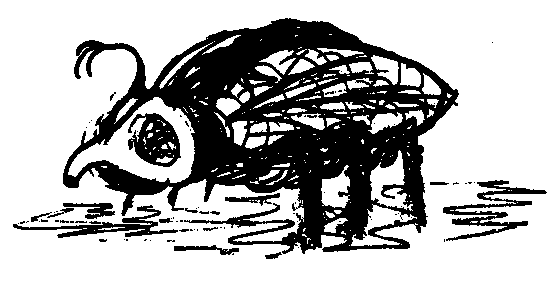
The magic item section opens up with a big table of treasure types. See, back in older editions you didn't get treasure by level, each monster had "Treasure Type X", and you would look up on the chart to see what sort of treasure X would correspond to. I don't think it was meant to be followed slavishly, more "Feral animals don't tend to hoard magic items! Evil wizards will tend to have scrolls, potions and wands!" kind of deal. Each letter code corresponds to different amounts of copper, silver, gold, gems & jewelry, and magic items & maps.
Maps? Yes, certain treasure categories have a chance of leaving a map, to treasure, magic, or magic and treasure. Men fought on water (so pirates or buccaneers) have a %50 chance of having one. Also noted is that Men type enemies (treasure type A) may have prisoners as well as stacks of filthy lucre.
But you're not here for maps, you're here for Magic Swords. Let's dive in.
First off, they get their own category separate from the other weapons, which kind of makes sense given the types of myths and fantasy-stories-aping-myths D&D was cribbing from. You never hear about magical ancestral flails. The hero is never renowned for his fighting ability with a bohemian ear spoon. Anyway. Swords possess alignments and egoism ratings. If you grab a sword that is not of your alignment, you take some damage. If the swords intelligence or egoism is 6 or more above your intelligence, it will take control of you immediately and impose its alignment upon you. Right here in 0e, treasure randomly dicking over players (And that's without accounting for the Sword - 2)
Magic swords have several base abilities. Mostly it's + X, or + X, + Y vs Foo (Like a Sword + 1, + 2 vs Lycathropes) but there's also the Sword + 2, Charm Person ability; the Sword, One Life Energy Draining Ability (No explanation is forthcoming in this book about what the sword actually does); and the Sword + 1, 2-8 wishes included (remember, Magic Swords can ONLY be used by fighters). After you've determined your basic sword, you roll a d12 to determine intelligence. Intelligence of seven or more grants enhanced communication abilities and powers... you know what, I'm just going to do like has become tradition in this thread and roll one up.
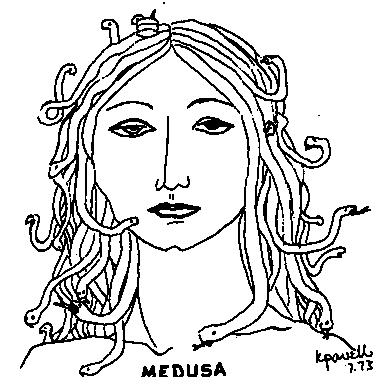
We roll an 61 for our basic sword type, giving us a Flaming Sword. We also roll a 98 for alignment to make it Chaotic, meaning that the Flaming sword is normally + 1, + 2 vs Pegasi, Hippogriffs and Rocs, and + 3 against Ents. The general + 1 is just to hit, but the bonuses against specific creatures add to hit and to damage rolls. Our sword (now named "Fuck anything with feathers" in elvish) has an intelligence of 11. This means it can speak (D100 = 33) one language, read magic and has three primary powers. Our primary powers are (43) Detect Traps, (12) Note shifting walls and rooms and (00) a roll on the extraordinary ability table. An 87 means that this sword gives its owner the power of flight. As it has an intelligence of above 7, it has an egoism of (d12) 6. Egoism comes into play by influencing the wielders behaviour to:
-Ignore better weapons (like hell a better weapon will come up)
-Lead the user into great danger so the sword can be exalted in combat
-Allowing itself to be captured by a higher level/more dangerous thing "which is closer to the swords station"
-Surrendering itself to a lower level/weaker willed character so it can get its way more often and
-Requiring a share of treasure to pay for fancier scabbards, jewel encrustation and magical devices to keep it safe when it isn't being used (No words on whether it wants sexy slave girls to carry it around on a podium and oil it down while paying compliments to its sharpness, but I wouldn't put it past one of these swords.)
Basically, egoism means EGOISM , and a sentient sword will attempt to wrest control of a character whenever the characters guard is down. If your intelligence is 6 higher than the swords egotism though, then it will never be able to take over and the character has the sword firmly in check. If the character has less than 6 higher, then the sword will only attempt to take control in stressful or harrowing situations using a formula based on the swords Egoism + Intelligence + additions for special powers VS a characters Strength + Intelligence + or - modifiers for physical condition to determine what percentile chance the sword has of taking charge. A 0 to 1 point difference means that control is fiercely contested, while if the sword has a significantly greater score then it's the character who can try to take control in dangerous situations, or if the sword is 6 points higher in egotism vs intelligence then it just takes over the character entirely suppressing their personality for its own.
Oh yeah, swords have a random chance of also having a special purpose. These purposes are to defeat: Magic-Users, Fighters, Clerics, Monsters, Law or Chaos. If you're engaging in that activity, then you get a special ability based on the alignment of the sword. Neutral swords give a + 1 to all saving throws, Lawful swords paralyze chaotic opponents, while Chaotic swords disintegrate lawful opponents. Just for shits and gigs, I add this to our sword, giving us:
"Fuck Anything with Feathers"
Flaming Sword: + 1, + 2 vs Pegasi, Hippogriffs and Rocs, + 3 vs Ents
Chaotic Alignment
Intelligence 11
Egoism 6
Speaks Chaotic and can Read Magic
Detect Traps
Note shifting walls
Flight
Special purpose: Slay Monsters (Disintegrates Lawful Monsters)
For the most part, that actually seems like a vaguely coherent magic sword for a champion of chaos. It's designed to slay Lawful monsters, especially Pegasi Hippogriffs and Rocs, and gives its wielder the ability to fly to deal with them. Also it can detect traps and shifting dungeon architecture.
Next time: All the other kinds of magic item!
Other Magic Items
Original SA post OD+D: Other Magic Items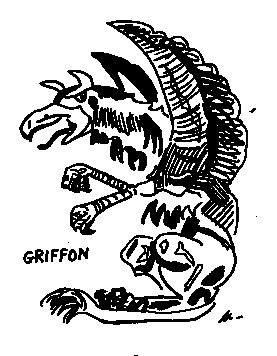
Right. Swords got their own section because they're so in depth and complicated. Now, the highlights of everything else!
Armour: Subtracts its plus from the opponents hit dice. I guess that this means when you're rolling to hit, but it does lead to the idea of a fighter feverishly beating up a demon with a suit of full plate to debuff it down in hit dice. Oh yeah, shields only give their bonus if it's greater than that of the armour, and then only one in three times.
Miscellaneous Weapons:
Axes, Hammers and Spears can be used in melee or thrown. Spears if used to impale something do double damage, while the only reason to be a Dwarf is if you get a +3 warhammer. When a dwarf is using it, the range doubles, it inflicts double damage, returns when thrown, and does +3 damage against giants. Basically turns you into undersized Thor.
Bows and Arrows enhancements stack, and the arrows add their +1 to damage as well as to hit.
Potions can be of a pre-existing spell or a special potion effect like these.
Growth makes you grow to 30 foot. Giant Strength is a separate potion that gives you the prowess and damage of a giant, while the growth potion apparently doesn't.
Delusion convinces you that it's actually some other potion and that it had full effect when you drank it.
Invulnerability gives you +2 to your saves and defenses (keep in mind most potions last 6 rounds). However, drink more than one a week and the bonus becomes a penalty.
X control comes in several flavours for different monster types, and functions as a charm person spell.
Scrolls Hold spells for magic-users, or protection from X spells which can be used by anyone.
Rings one per hand, unless noted abilities are unlimited in use.
Mammal control functions like charm person but for mammals. Not any other sorts of animals, just mammals.
Three Wishes gives you three wishes in the classic D+D sense, with advice that if your players are being dicks with their wishes, you should be a dick right back (wish for more wishes? You get looped back in time to when you found the ring. Wish for a mirror of life trapping? Well you have one. All to yourself.) Though it does also say that when wishing for powerful items it can give clues, and that if you wish for an unfortunate adventure to have never happened this should be granted. Oh yeah, and if you roll a 100 on the ring generation chart, you get the ring of many wishes, with between 4 and 24 wishes.
Delusion makes you see whatever you want to see. It specifically says it's a bummer to fool players.
Regeneration Means that you regenerate 1 point of damage a turn and can only be killed permanently if you're acid-ed or burned like a troll. In a system where you normally recover 1 point of damage every two days, this looks godly.
Djinni Summoning gives you a permanent Djinn as your servant. Djinns hit like giants, can create food, drink, cloth and wood permanently, can create metal that lasts less time the harder it is (gold lasts a day, steel for an hour), can fly, become invisible and assume gaseous form. Basically you get a totally awesome magical servant.
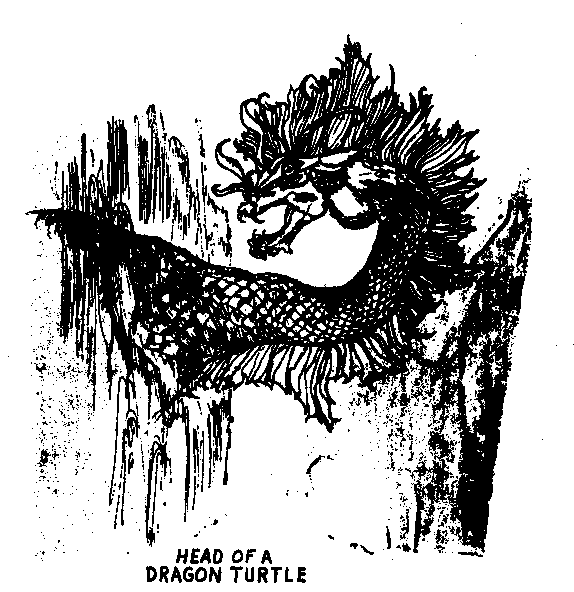
Wands and Staves can be used by casters to shoot spells, or have unique effects. Wands get 100 charges, staves get 200.
X detection allows you to detect magic, enemies or traps within a few inches.
Staff of Withering has no extra bonus to hit but with every strike it ages the target ten years. Undead don't give a shit, but against mortal foes it's pretty awesome.
Staff of Wizardry is the Rolls Royce of staffs. It' a +1 weapon that can shoot blasts of cold, paralyzation beams, fireballs, lightning bolts, cast continual light, use telekinesis, make you invisible, conjure up walls of fire, cast passwall, functions as a staff of striking (does 2 dice of damage) lets you whirlwind as an djinni, shoot webs and summon elementals, as well as break it to do 8 x the number of charges left to everything in 3 inches.
Miscellaneous Magic
Crystal Balls let you scry around like a pro. And if you try to scry through lead more than three times in a day you go mad.
Scarab of Protection from Evil High Priests absorbs fingers of death.
Bag of Holding can hold 10,000 GP and they weigh 300 GP (oh yeah, carrying capacity isn't based on pounds, but GP. And remember you get XP for bringing back loot.
Helm of Teleportation lets a magic user use a single teleport spell to skip himself around the universe. If you teleport someone else your spell gets used up.
Gauntlets of Ogre Power bestow the power of an ogre! To your arms only.
Girdle of Giant Strength Gives you the strength of a Hill Giant.
Elemental Control Devices These take a turn to set up, but once they are you can summon a 12 HD elemental of one type or another to fuck dudes up for you.
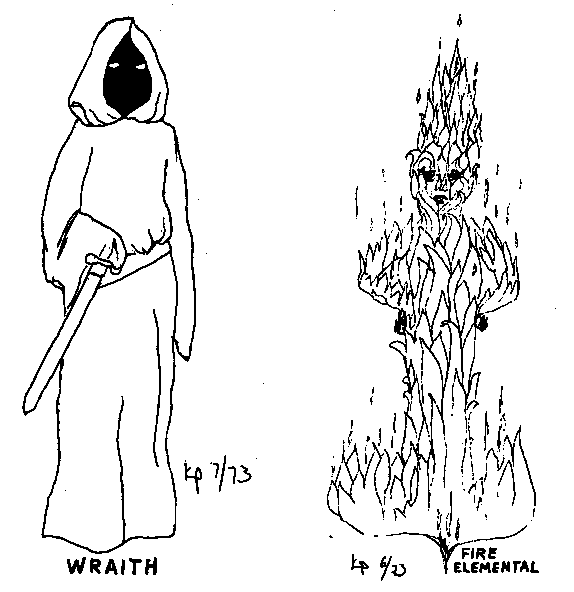
After this there is some talk of magic item saves, and Artifacts, which are "super powerful" and "must be handled by the referee." Suggestions are a teleportation machine, the Stone Crystalization Projector, and a Crown, Staff and Orb set for each class.
Well, that's book 2 done. After this comes book number 3, The Underworld and Wilderness adventures. Containing rules for building yourself a sweet-ass castle.
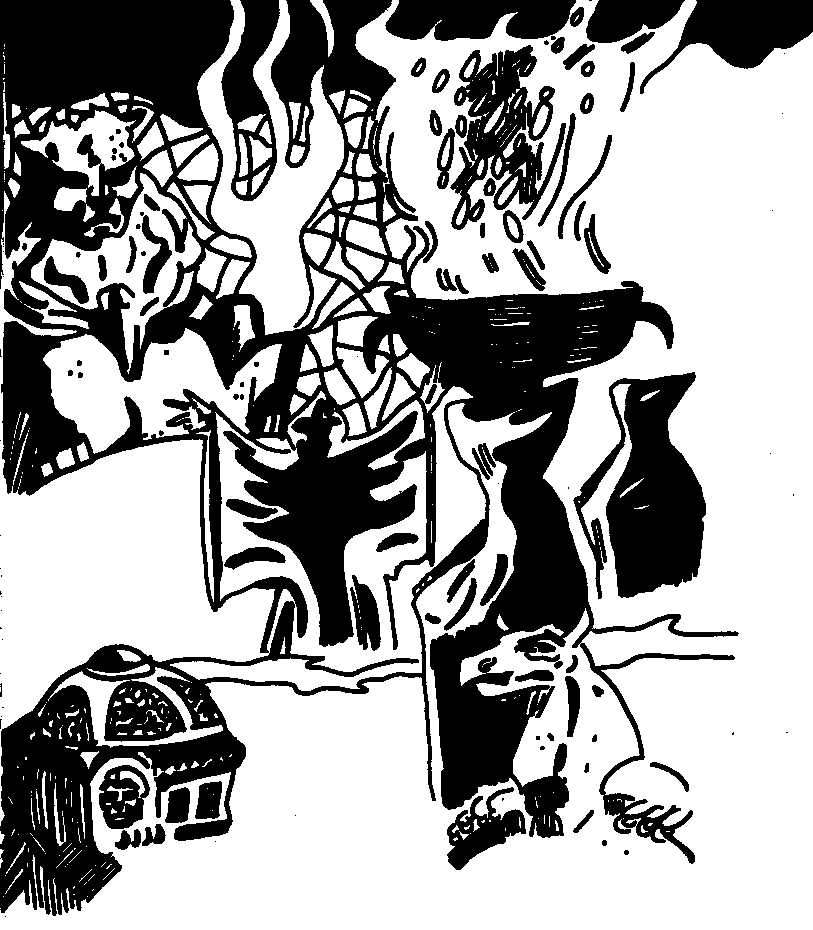
The Underworld/Wilderness Adventures
Original SA post OD+D Part 3: The Underworld and Wilderness Adventures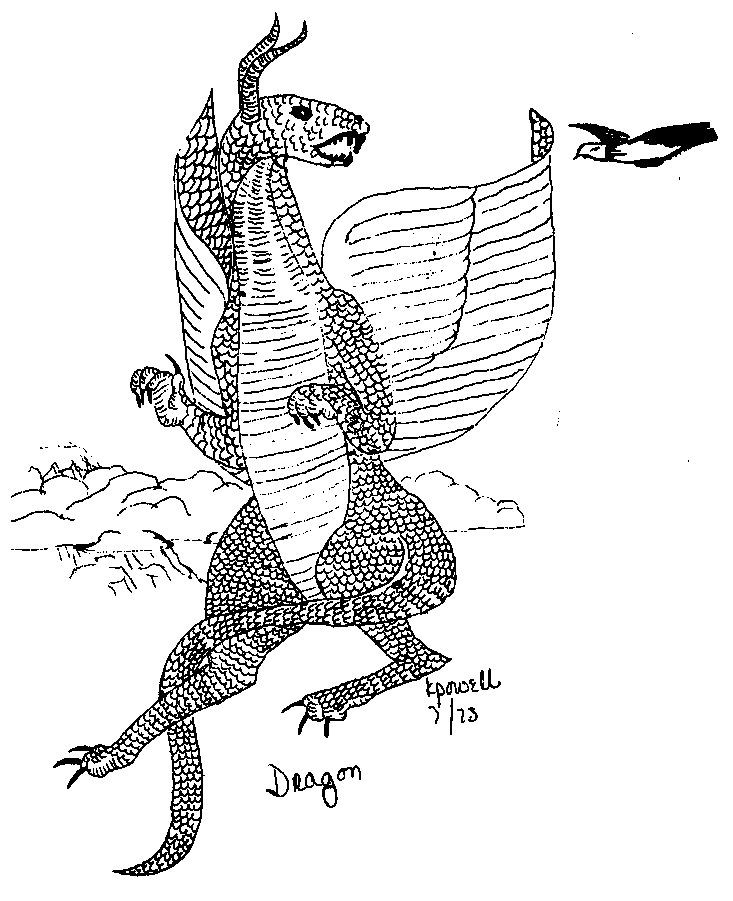
Oh, OD+D Dragon, you're so... un-intimidating. Anyway, welcome to Book 3. If Men and Magic was the PHB, and Monsters and Treasure the Monster Manual, that makes this the Dungeon Masters Guide.
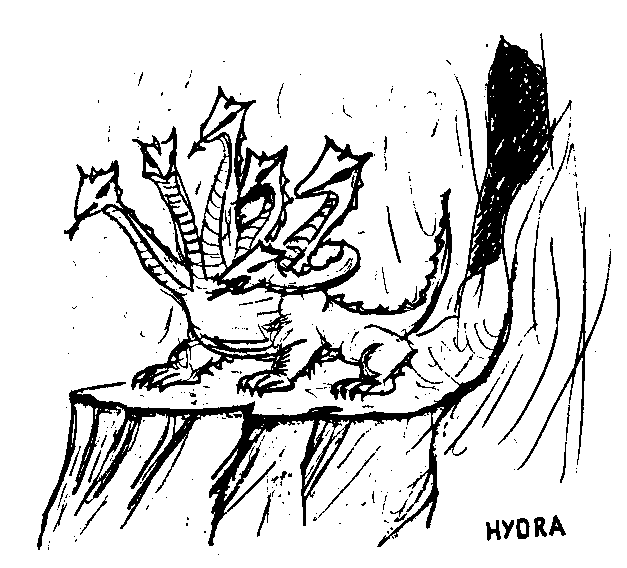
Let's see just how we're supposed to run OD+D, shall we? We learn that before a campaign can begin, the referee should sit down and design an underworld labyrinth for the players to explore.
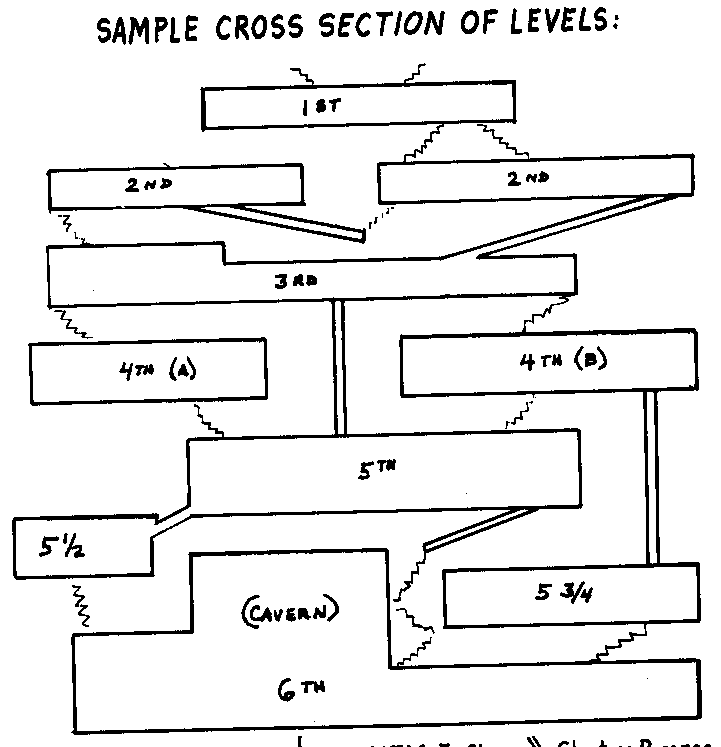
Thusly. From reading the description, it seems like the intent was to have a single dungeon be the focus of the players adventuring, since it should always have new things under construction so players don't get bored. Examples of the things found within Greyhawk Castle are given, such as an underground lake, crypts, an arena of evil, a musem from a forgotten era, caverns full of fungus, and a bowling alley sized for giants. We are then thoughtfully provided with a sample level to get us started on dungeon design.
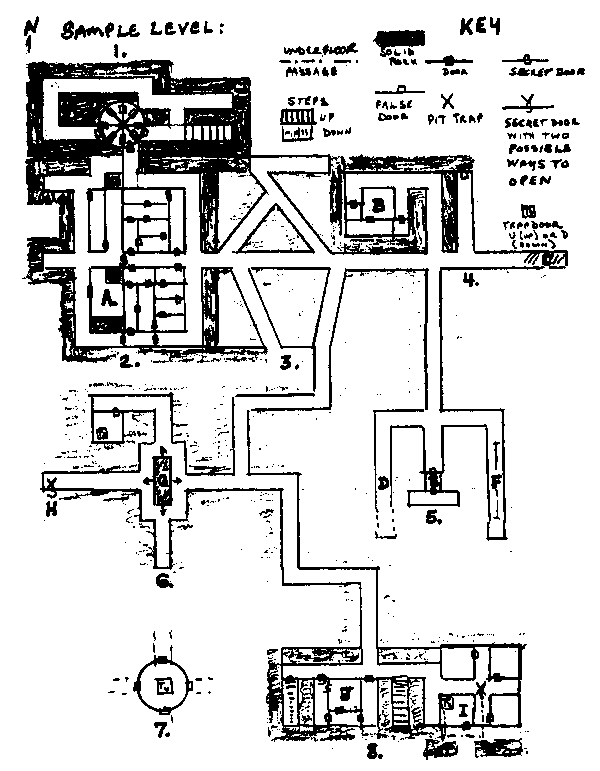
I'm going to run through this dungeon for you so that everyone can see how things were done in the old days.
Area 1 contains nothing. Unless the secret door on the south side of the circular room is noticed, the PCs can never explore the dungeon proper.
Area 2 is just a bunch of empty rooms, apart from A, which contains 4 Ogres, 2000 gold and a potion. An Ogre, on average, will kill a starting PC in one successful hit.
Area 3 is a maze of slanting passages that exist purely so PCs can't accurately map the area.
Area 4 has a Basalisk at B, and at the dead end corridor a trap: A slide down one level disguised as a set of stairs up.
Area 5 has three features. D is a slanting corridor that will take you down one level without you noticing. E is a two way transporter that can go just about anywhere the referee likes. The two suggested locations are the centre of the earth or the moon. F is a one way transporter, and "The poor dupes will never realize it unless a very large party is entering it". This like the angled corridors is noted as being annoying for mapmakers.
Area 6 has a randomly shifting wall in the middle of the 4 way intersection that blocks off passages, while H is a secret door that leads to two random locations, determined each time the door is opened.
Area 7 is a sample room that rotates randomly, again designed to frustrate mapmakers.
Area 8 is kind of boring, a pit trap that leads into some trolls, a villain room with secret doors for escape, and some stairs down.
After that is a list of sample tricks and traps, including teleporters, mind control and geas rooms, dead ends so that the PCs can be caught by chasing monsters, one way doors, natural passages which make mapping virtually impossible, and corridors that appear longer or shorter than they are. Basically, whoever wrote this really hated players making maps. There's then some notes on how to assign treasure, and ideas on how to keep the dungeon fresh (add new shit, change what's there and put in new monsters between visits)
Next time, how to deal with the dungeon and monsters!
The Underworld
Original SA post The Underworld and Wilderness Adventures part 2: The Underworld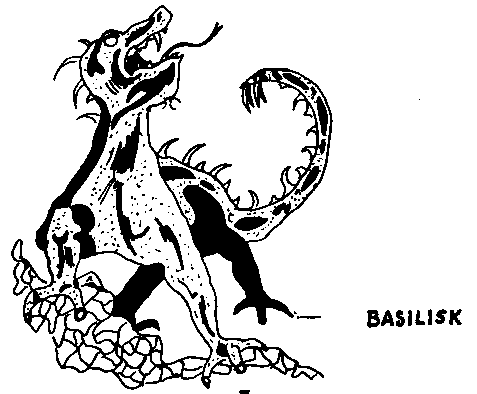
After dungeon building and treasure assigning, there come the rules on how to move through the underworld. All distances underground are in feet, so inches are converted to tens of feet. Moving around the dungeon is done in segments of ten minutes, and a character can make two moves each segment. Two moves makes up one turn, except when you're running away where four moves make a turn and you aren't allowed to map. Apparently a fully armoured character can move 120 feet in one turn under normal circumstances. One turn per hour of game time has to be spent resting. Various actions take different amounts of time to accomplish, set by the referee. Each turn can also fit in ten rounds of melee combat. Confused?
Doors have to be forced open all the time and will automatically close behind the players. Monsters do not have any such difficulty. Doors can be spiked open, but there's a 1/3 chance that they'll close anyway. They can also be listened at to detect sounds, with a 1/6 chance for humans, or 1/3 chance for nonhumans to hear any sounds that there are to be heard. Players need to carry lanterns (meaning they can be seen) or use seeing in the dark spells, monsters all naturally have infravision. If they're working for a PC, then they don't and have to use a light source or spell. Why? It doesn't say! There's also the lightning bolt rebound and fireballs filling up full volume rules that made it all the way to 2nd ed before getting cut.
Monsters can be spotted 2d4 inches away, unless the monsters get a surprise attack on the players. There's then a selection of wandering monster charts depending on how deep you are in the dungeon, along with rules on avoiding them. Monsters can be distracted from pursuing by throwing food or treasure, treasure works better on intelligent monsters, food better on nonintelligent ones. Also when you encounter a monster 2d6 should be rolled to find out how they react. Most of the time it's a neutral reaction, but this can be modified for alignment, fear, bribes and so on. Though no guidelines are given on how to do this.
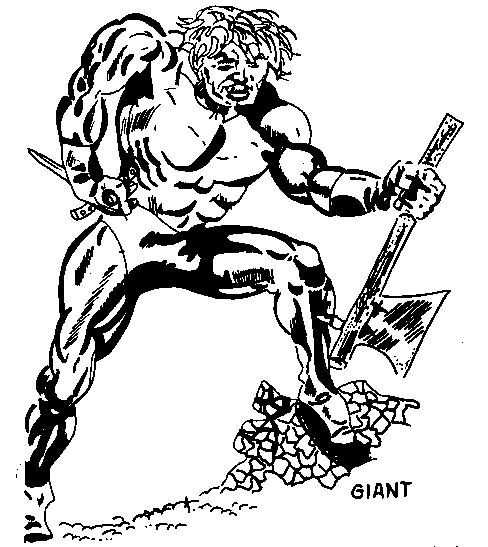
After this comes... the example of play! Let's see how D+D is MEANT to work, shall we?
quote:
The players, equipped and ready, are assumed to have located a set of stairs descending to the first level beneath the ground. The Referee's part will be indicated REF, that of the "Caller" indicated by CAL
REF: Steps down to the east
CAL: We're going down
REF: 10', 20', 30' -- a 10' square landing -- and steps down to the north and curving down southeast.
CAL: Take those to the southeast
REF: 10', and the steps curve more to the south; 20'. Steps end, and you are on a 10' wide passage which runs east, southeast, and west. There is a door to your left across the passage on the northeast wall.
CAL: Listen at the door -- three of us.
REF: (After rolling three dice) You hear nothing (At this time a check for wandering monsters is also made)
CAL: Ignore the door and proceed along the corridor southeastwards.
REF: 10', 20', 30', 40', 50'. "Four way": Northwest, northeast, south and southwest -- the south passage is 20' wide.
CAL: Go south
REF: 10' - 70': passage continues, doors east and west.
CAL: Listen at the east door.
REF: (After appropriate check) You hear shuffling.
CAL: Two of us (Specifying which two) will throw our weight against the door to open it. All will be ready for combat.
REF: (After rolling two dice) The door opens! You can't be surprised, but the monsters -- you see half-a-dozen gnolls -- can be. (Here a check for surprise is made, melee conducted, and so forth)
CAL: Ok, what's the room look like -- we're examining the walls, ceiling, floor, and contents of the room itself.
REF: (After checking to see if dwarves and/or elves are in the party:) The room is a truncated pyramid. The east wall is the truncated part, directly opposite the door you entered. It is 10' long with another door in it. The walls connecting it to the west wall, the place you entered, are about 35' long. The west wall, where you entered, is 30' long with a door in the middle of the wall. The elf has noted that there seems to be a hollow spot near the east end of the southeast wall. The floor and ceiling seem to have nothing unusual. The room contains the bodies of the gnolls, a pile of refuse in the north corner of the west wall, adn two trunks along the wall opposite the one that sounds hollow.
CAL: The elf will check out the hollow sound, one of us will sort through the refuse, each trunk will be opened by one of us, and the remaining two (Naming exactly who this is) will each guard a door, listening to get advance warning if anything approaches.
REF: Another check on the hollow sound reveals a secret door which opens onto a flight of stairs down to the south. The refuse is nothing but sticks, bones, offal and old clothes. One chest is empty, the other has a poison needle on the lock. (Here a check to see if the character opening it makes his saving throw for poison.) The chest with the poison needle is full of copper pieces -- appears to be about 2000 of them.
CAL: Empty out all of the copper pieces and check the trunk for secret drawers or a false bottom, and do the same with the empty one. Also, do there seem to be any old boots or cloaks in the rubbish pile.
REF: (Cursing the thoroughness of the Caller!) The seemingly empty trunk has a false bottom... in it you have found an onyx case with a jeweled necklace therein. The case appears to be worth about 1000, and the necklace 5000 Gold Pieces. Amidst the litter the searcher has located a pair of old boots, but there is nothing like a cloak there.
CAL: The boots will be tried on now to see if they allow silent movement -- we can use a set of Elven Boots! I will secure the case and necklace in my backpack, while the others will, by turn, fill their packs with coppers.
REF: This will require four turns (He checks for monsters wandering in, and on the fourth try one is indicated. However, as there was a listener at the door it is approaching, he also checks to see of it is detected, allowing a good probability that it will be heard.) As you complete your loading the dwarf at the west door detects heavy footsteps approaching. The boots, by the way, are Elven-type...
CAL: EXCELLENT! Our Magic-User will cast a HOLD PORTAL on the west door while the elf opens the secret one. We will then beat a hasty retreat down the stairs to the south. Onward, friends, to more and bigger loot!
With appropriate variation for ability to detect and/or see what is around them, the adventure will continue in this manner until the party leaves the dungeons or are killed therein
Clearly the emphasis on combat means that 4e is not true D+D. What it should focus on is exploring dungeons and anally searching objects for treasure!
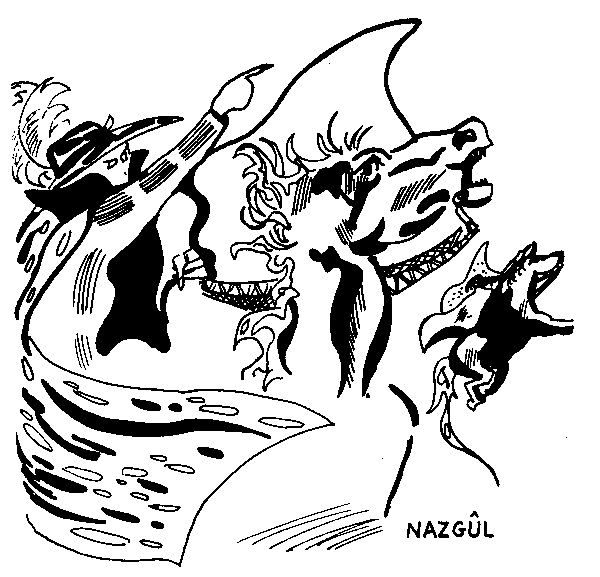
Next time, the great outdoors.
Wilderness Adventures
Original SA post OD+D: The Underworld and Wilderness Adventures: Wilderness Adventuresquote:
The so called Wilderness really consists of unexplored land, cities and castles
What? But, cities and castles are the exact opposite of wilderness! Anyway, the game then tells the referee how to set up for a wilderness adventure (Ground level of dungeon, nearby city, surrounding terrain) and lets us know that Blackmoor is a small village while Greyhawk is a city, both are mapped with locations for players to visit. Beyond the dungeon, village, and their immediate surroundings, terrain is a mystery. Just bombing around the wilderness looking for trouble is done on an Outdoor Survival board. If you're actually going forth on a quest to get some huge legendary treasure or searching for land to build a castle on, that's done differently. Exactly how it's done differently is never explained.
Castles Castles are represented by ponds on the Outdoor Survival map. Going near a castle can cause the resident to ride out to meet you, while going to the hex and hailing them will always make them come out unless you're obviously here to start shit up. Alignment and character class of the lord is randomly determined for each castle.
Fighting Men will immediately challenge all of the party to a jousting match, or demand a GP toll to cross their lands. Lose in the joust and he'll take your armour, win and he has to give you food and board for a month, two weeks rations and supply you with heavy warhorses.
Magic-Users will use Geas to make you go and get treasure if they are not hostile, taking at least half of the earnings for themselves and prioritizing wonderous items, staffs/wands and rings over other sorts of items. Otherwise they demand a toll, preferably payable by magic item. Basically wizards are huge dicks and everyone should hate them.
Clerics demand a tithe of %10 of all the parties material wealth, and if you refuse to pay they slap you with a Quest to go and do something for their god. Clerics are also tremendous assholes. Considering full plate armour costs 50 gold a suit, you're probably better off with fighters, at least they don't randomly mind rape you into doing quests for them.
Castles also have guards of all sorts, ranging from the ordinary (Champions, 1d8) to the unusual (Gargoyles, 1d12) to the downright mad (Balrogs, 1d4) as well as men at arms to aid the defense.
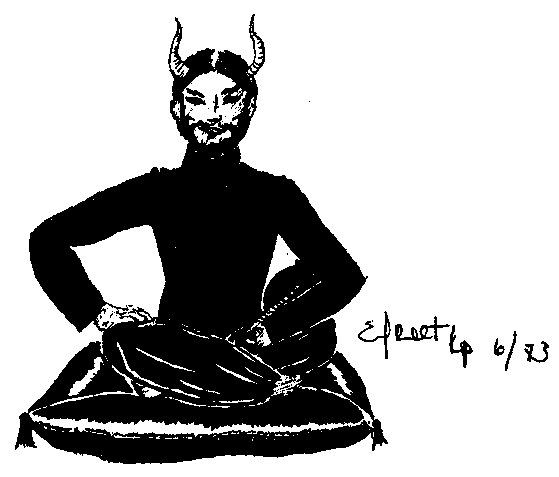
After that comes the actual exploration rules. Different modes of transport move at different speeds. Foot will take you 3 hexes a day, a horse anywhere from 5 to 10, a galley will take you 20 (6 in a swamp), riding a balrog will let you go 15, a pegasus takes you 48 hexes a day. Larger parties move slower, different terrains give different penalties, yadda yadda. Also there are wandering monster charts. Then come the castle building rules.
A player may select a portion of land to build a castle on, using the chart below:
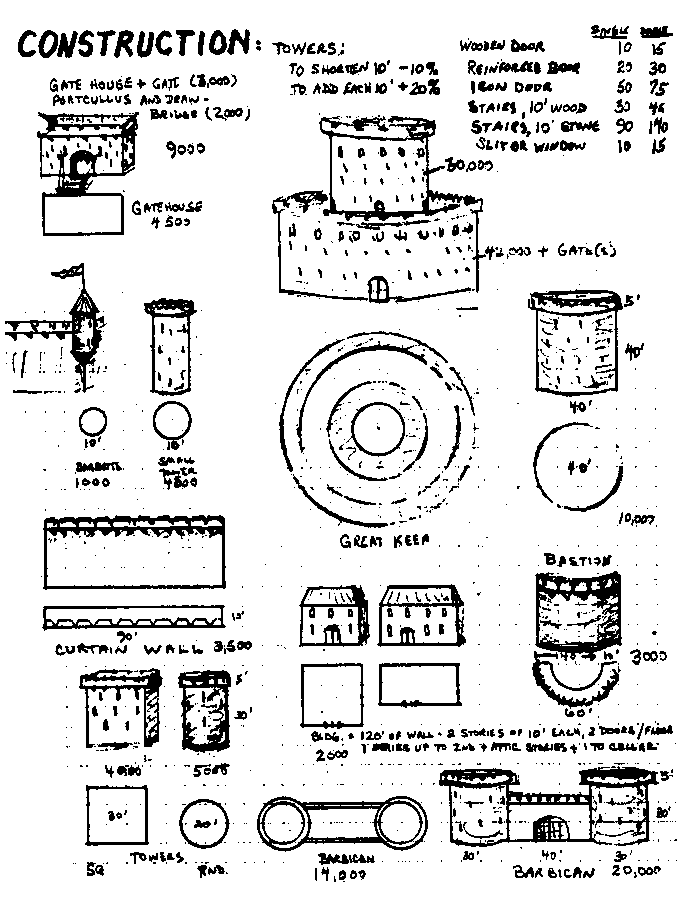
There's also a proper chart for siege equipment and defenses, and a note that other items can be purchased, using these as a guideline. If you have a castle, you can also hire specialists.
Alchemists can duplicate potions at one half list price and also research poisons.
Armourers maintain and produce armour and weapons.
Assassins assassinate. There should be a limit on how many you can hire per year.
Animal Trainers train animals of one sort. If you want to have tamed animals beyond horses and mules, you need these guys to do it.
Engineers oversee construction and repair of castles, and sieges.
Sages function as advisors, and can only be hired by fighters.
Seamen man ships, under a...
Ship Captain "A self explanatory role." Really, that's all they give you.
Smiths can assist armourers to produce more weapons, and need to be employed to shoe horses.
Spys can either be planted by the players, or bribed away from the enemy force. They will provide information to the characters via the referee.
Men at arms have monthly upkeep costs based on what sort of soldier they are, as do the specialists above.
There are benefits to building a stronghold, besides having a kickass place to hang out. Apparently, and this has never been mentioned before, players have to pay 1% of their total experience in GP as upkeep until they have a castle of their own. I assume this is per month, it doesn't say. Also, building a castle out in the wilderness means that you now control all of the surrounding hexes (by virtue of having a fucking castle). If you clear the hexes of monsters that is. The territory contains 2d4 villages with d4x100 residents each. Each resident provides 10 GP per year in taxes. This can be increased by assorted activities, with some examples helpfully provided. It's also noted that if the players start being dicks to the population at large, a mob of angry villagers can rise up and attempt to overthrow them.
quote:
Also possible is the insertion of some character like Conan to bring matters into line
After this are rules for naval and air to air combat, which read like little wargames in their own right. There's a note that as this is a fantasy world, anything is possible, and that no "Natural Laws" that we take for granted should be certain. Gates to other times and places, space being breathable, stars being only 100 miles away and so on. Then comes the afterword, which boils down to "Don't bug us for rules interpretations, send us your ideas and stories, we'd love to hear them, feel free to make shit up, and have fun!"
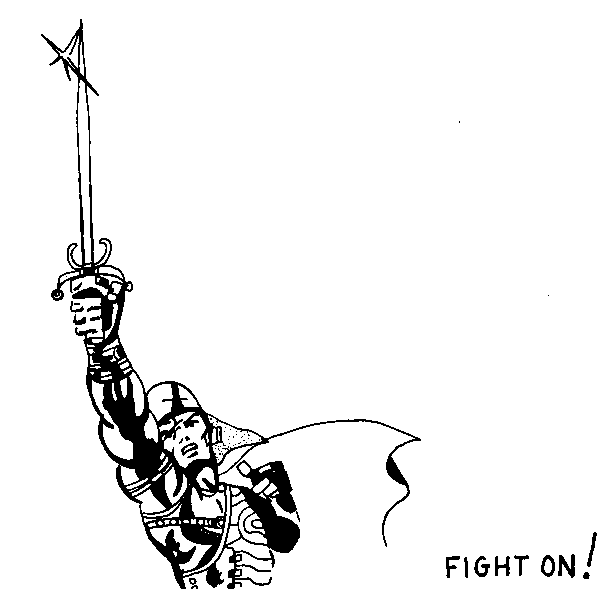
And since people seem to like it so much, here's the rest of the art:
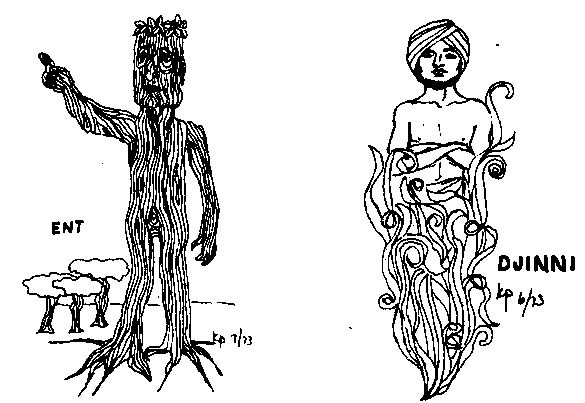
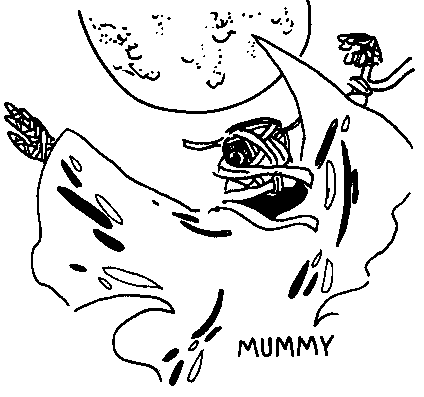
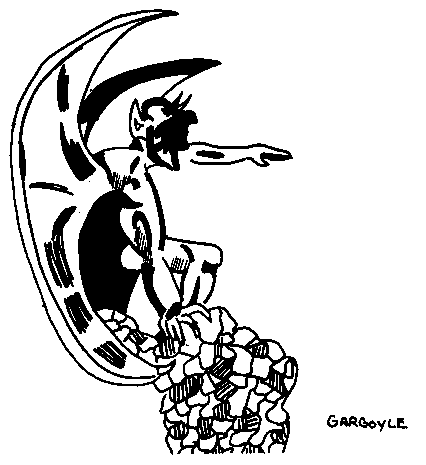
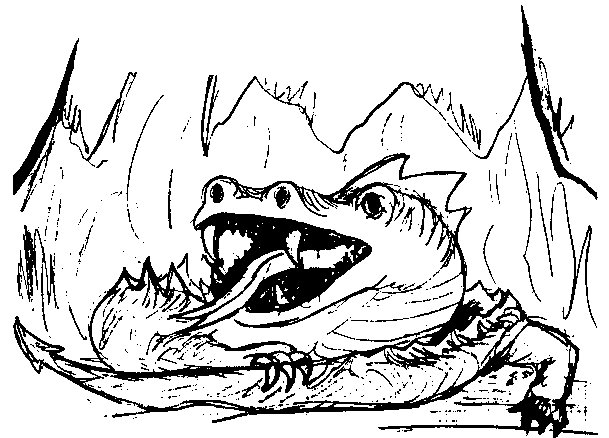
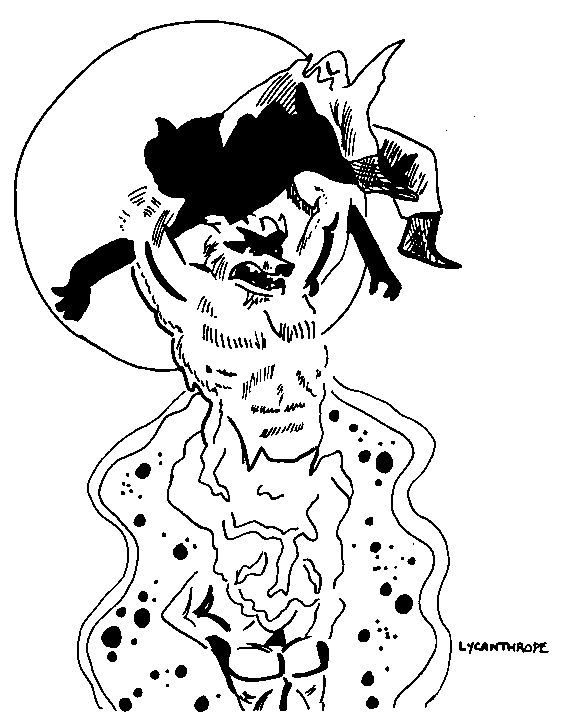
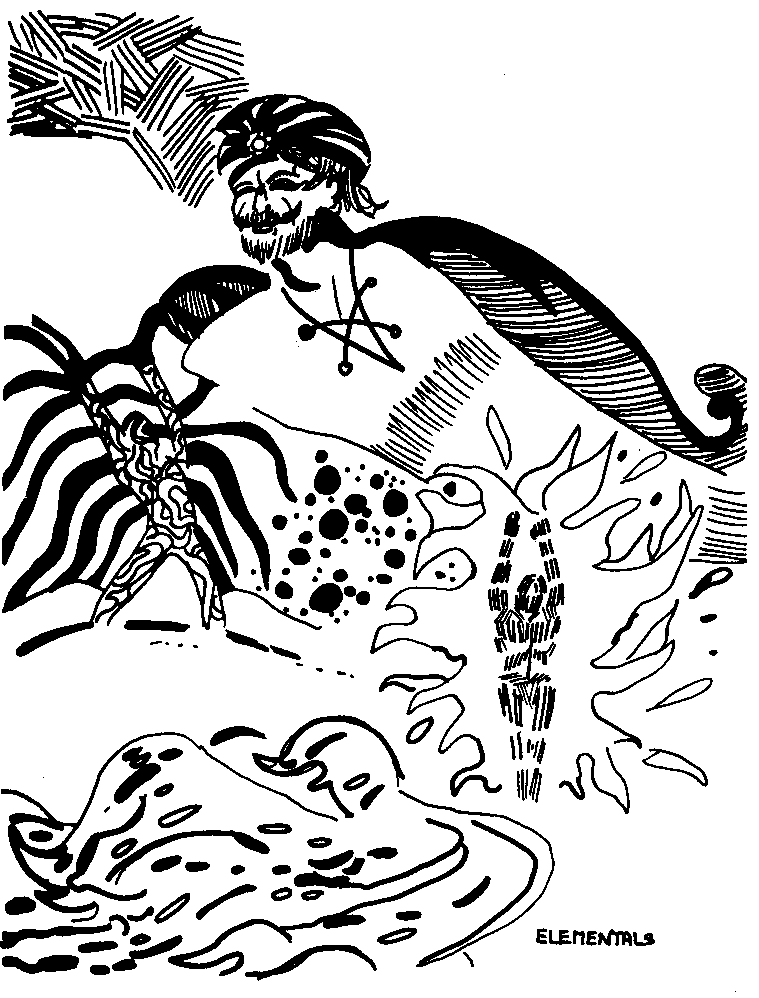
And that is the core 3 books of OD+D. I have Greyhawk, but I'll save that for another time. I have other RPG stuff that can go in this thread.